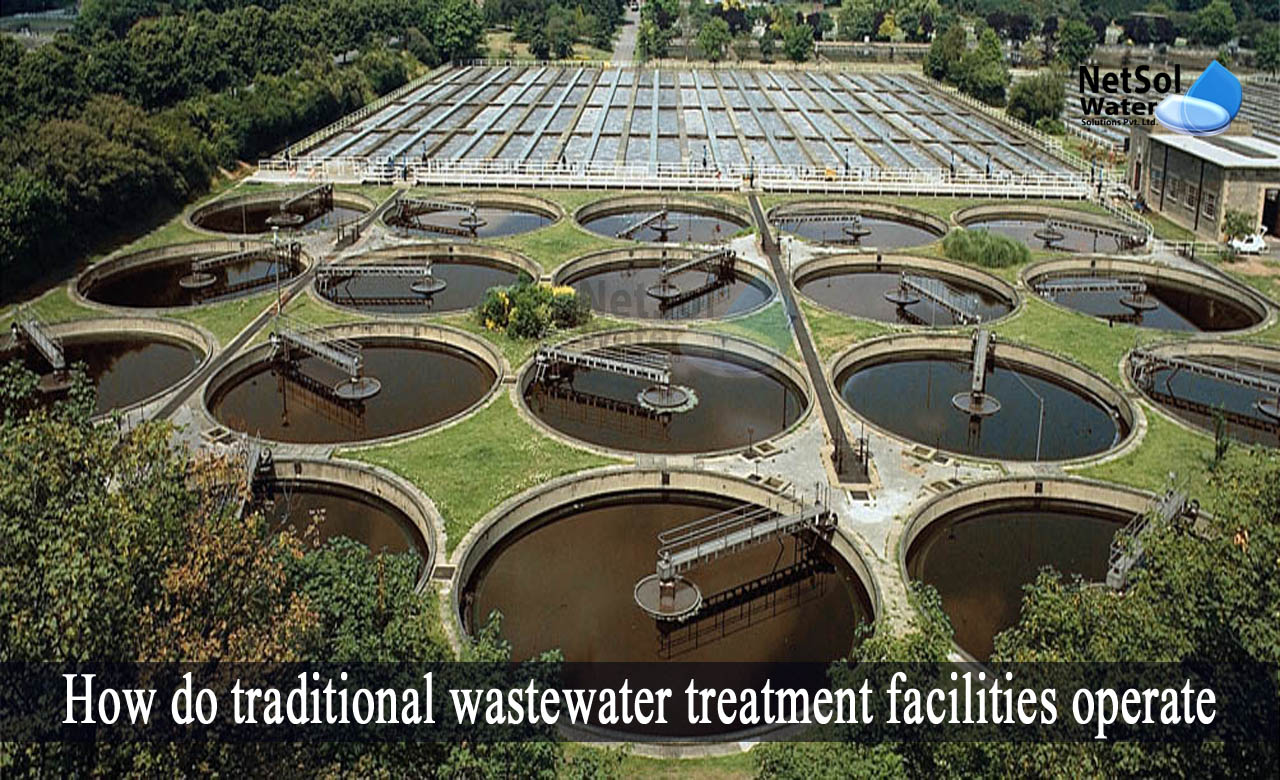Modern wastewater-treatment facilities use cutting-edge technology and fundamental physics, to clean even the dirtiest water so that it can be released back into the environment, without endangering aquatic life or the water body itself.
Before the advent of modern wastewater treatment plants, traditional wastewater treatment facilities operated everywhere. Let’s see how they worked!
What is a wastewater treatment plant?
A facility that uses a combination of physical, chemical, and biological processes to treat industrial effluent, and remove contaminants is known as a wastewater treatment plant. The main goal is to provide a solution that will guarantee compliance, with safety precautions and discharge laws.
What does a wastewater treatment system usually gets rid of?
The sophisticated technologies required by an industrial wastewater treatment system, can eliminate any one or more of the following contaminants:
· Biological oxygen demand or BOD
BOD or biochemical oxygen demand is a measure of the amount of biodegradable material in wastewater. Introducing contaminants, like faecal waste and wash-downs from food processing, might result in high BOD levels.
· Phosphates and nitrates
Imagine that wastewater contains significant concentrations of nitrates and phosphates, which are not treated before being released into the environment. If so, they can raise BOD and promote extensive growth in algae, phytoplankton, and weed. This causes eutrophication, which kills species and creates dead zones in the ecosystem.
· Pathogens
These are any bacteria, viruses, fungi, or other microbes that can harm human health, and are usually found in wastewater. This includes the transmission of fatal or life-threatening diseases, like cholera, dysentery, salmonellosis, hepatitis A, botulism, giardiasis, acute illness, and severe digestive issues.
· Metals
Metals don't decompose and create hazardous environments, which severely harm the environment and human health.
· Total suspended solids
Total suspended solids (TSS) in wastewater, especially if reused or released, can be harmful to aquatic life.
How do traditional wastewater treatment facilities operate?
Wastewater treatment facilities clean wastewater using a variety of techniques, including:
Coagulation
It is a procedure that eliminates the bulk suspended solids and other pollutants, by adding various chemicals to a reaction tank.
Flocculation
After the coagulation procedure is finished, the water moves into the flocculation chamber, where long-chain polymers are used to slowly mix the particles together, to produce visible and settleable particles.
Sedimentation
The flocculated material and water in the gravity settler pour into the chamber and circulate outward, in a sizable circular device. The water rises to the top and spills to the clarifier's edge, during a protracted settling operation. This enables the solids to accumulate at the clarifier's bottom.
Clarification
The solids are next scraped into a cylindrical tube in the centre of the clarifier, where slow mixing takes place. The bottom-pump sludge is pumped into a dewatering process. With the help of filter or belt presses, the entire water content of the sludge is removed, producing a solid cake.
The water from the sludge is squeezed out by placing it on a press and between two belts. After that, the sludge is loaded into a hopper and taken to a landfill.
Filtration
The water overflow is then directed into gravity sand filters as the next step. Usually, the sand is packed securely and inserted in the filter, at a depth of two to four feet.
The particles are then captured by the feedwater as it moves through.
Disinfection
To kill the water's microorganisms, the water must then be disinfected or chlorinated after passing through gravity-based sand filters. The filters are cleaned and disinfected by performing this step, upstream before filtration.
Distribution
In order to reuse the wastewater in an industrial process, it is typically piped into a holding tank that may be used as needed, by the facility.
Stages of treatment in a wastewater treatment plant
Primary, secondary, and tertiary treatments are the three main activities, which wastewater treatment plants do.
· Solids which float to the bottom of the tank are broken down into sludge during the initial treatment process, releasing cleaned water for further processing. Large sedimentation tanks are used for this procedure.
· The anaerobic digestion in which microorganisms break down organic materials, use the sludge that is left over in the sedimentation tank.
· The pollutants in the wastewater are biologically removed by microorganisms, once the treated water is released for secondary treatment. There are two ways for the treatment to proceed: aerobically or anaerobically.
· Before releasing or reusing the wastewater, the final treatment step, which is a tertiary treatment, polishes it one more time.
How can you make sure that your wastewater treatment facility runs smoothly?
Operators of wastewater treatment plants should constantly assess the plant's efficacy in treating water, and make sure that systems are using the latest equipment and technology. When wastewater treatment plants are not operating well, it can be very expensive. The combination of outmoded water management techniques, ineffective and ageing pumping and processing equipment, and greater operating expenses can have a detrimental effect, on a treatment plant's bottom line by increasing operating costs and lowering revenue.
Get best service of wastewater treatment plants with Netsol Water!
Netsol is one of the top businesses offering effective wastewater management solutions. Our advanced effluent treatment products aid in the treatment of wastewater, reducing organics, inorganics, FOGs, TDS levels, heavy metals and other microscopic organisms, with the elimination of unpleasant odours, etc.
Netsol Water is Greater Noida-based leading water & wastewater treatment plant manufacturer. We are industry's most demanding company based on client review and work quality. We are known as best commercial RO plant manufacturers, industrial RO plant manufacturer, sewage treatment plant manufacturer, Water Softener Plant Manufacturers and effluent treatment plant manufacturers. Apart from this 24x7 customer support is our USP. Call on +91-9650608473, or write us at enquiry@netsolwater.com for any support, inquiry or product-purchase related query.



